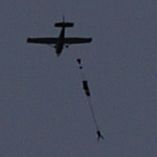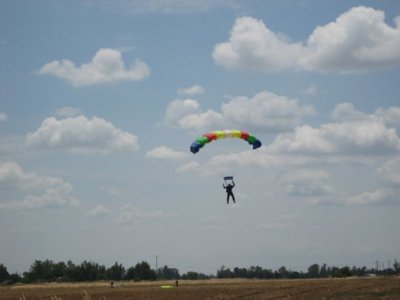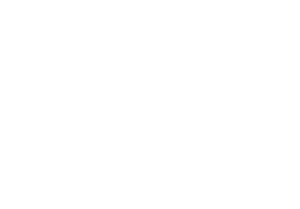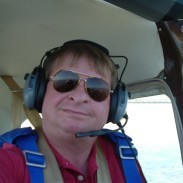hackish 8
Quote
Try typing 'Navajo' into the search box in the upper right hand corner. There's five pages of results, and only a handful are from this thread.
You should be able to find at least one or two DZs that have run Navajos as jumpships, and they would be the ones to aks for details on jump ops.
Unfortunately of the 120 or so hits you get only a few are even about a Navajo as a jumpship and nothing I found really answered my questions. Thanks to a few people who contaced me off the forum with answers. I assumed correctly there would be a few lurkers with 500 or so hours on said aircraft.
Back on topic. Is this AC the best you can get for skydiving? Of course not. They do seem to require a lot of careful engine management and they do have CoG challenges plus a small door. If I had a few million spare then of course I'd love to buy a turbine. Perfect plane or not I'm getting 12,500 from the $35 that used to get me 10,500 out of a cessna and I'm getting up there a lot quicker with more friends to jump with.
-Michael
Make sure they keep up on maintenance, and lend an ear on run up. My dad's friend died about 1.5 years ago in this exact aircraft in Las Vegas, due to loosing one of the engines after takeoff. He was by himself, so not heavily loaded either. He owned an aircraft transport business, so had many many hours in all types of aircraft, I'm sure he did all he could. Anyways, not trying to scare you, but if the pilot says get out, get outta that sucker!
The CG isn't just for takeoffs and landings. My first corporate flying job was with a Navajo many years ago. I remember it as being pitch sensitive. Ask the pilot to run a weight and balance problem with several jumpers at the door "station" and see what happens. bg
hackish 8
I've had this discussion with the pilot on what to do if he stalls the stucker on jump run. His answer, get the @#$@# out of my plane. I have seen some aircraft with light signals for emergency exits, ie both lights flash. Since the lights are hard to see and not the ideal colours I may offer to build a set out of LEDs. So many ideas so little time....
-Michael
-Michael
Doesn't the Navajo have a fairly low tail for a jumpship?
Millions of my potential children died on your daughters' face last night.
About the same as a Kingair. It might be a little closer
What series Navajo is the aircraft?
Is is a PA31-310? -325? -350? There are other variants as well. There's a turbo prop version as well with -28's.
It makes a huge difference. There's no point even talking about it until an identification is made.
Is is a PA31-310? -325? -350? There are other variants as well. There's a turbo prop version as well with -28's.
It makes a huge difference. There's no point even talking about it until an identification is made.
hackish 8
It's a PA31-350 Chieftain. Turbo piston engines (540's)
-Michael
-Michael
mircan 0
QuoteNeedless to say, it reminded me of the Queen Air, which could be aptly named a flying death trap if one engine went out. .
Why? Flying like a brick with one engine? I did some jumps out of Queen Air, and that might be our solution for next year tandem jumpship...
dudeist skydiver #42
No question the cost associated with any turbine is a real issue. The current popularity of tandems is certainly one of the reasons these expensive planes are commonplace. But for the smaller DZ's that can't afford them, there is nothing wrong with a Queen Air. Its roomy since its a King air with pistons.
Its just that drivers of such planes like the Navajo, Queen Air as well as some of the older ships like the Beech 18 (Twin Beech) need to treat them like a 182 in the event of an engine failure while full of jumpers at low altitudes.
I have seen it time and time again and lost a few friends in 1992 when the pilot (also a friend) tried to keep it in the air when he could have easily slid into a field.
Just put it down where you can.
Another inexpensive plane with fairly decent numbers is the old Twin Bonanza.
Its just that drivers of such planes like the Navajo, Queen Air as well as some of the older ships like the Beech 18 (Twin Beech) need to treat them like a 182 in the event of an engine failure while full of jumpers at low altitudes.
I have seen it time and time again and lost a few friends in 1992 when the pilot (also a friend) tried to keep it in the air when he could have easily slid into a field.
Just put it down where you can.
Another inexpensive plane with fairly decent numbers is the old Twin Bonanza.
You live more in the few minutes of skydiving than many people live in their lifetime
Another inexpensive plane with fairly decent numbers is the old Twin Bonanza.
I remember hearing those called "Twin tailed doctor killers" when getting my private..
I remember hearing those called "Twin tailed doctor killers" when getting my private..
Millions of my potential children died on your daughters' face last night.
QuoteAnother inexpensive plane with fairly decent numbers is the old Twin Bonanza.
I remember hearing those called "Twin tailed doctor killers" when getting my private..
Actually the twin bonanza has a single tail and you must be referring to the B-18 which is a pretty decent jump ship but those radials generally require a bit more maintenance.
As far as the Twin Bonanza (Model 50) also referred to as the "T Bone" goes, It a rugged airplane and this model led to the later Queen and King Air versions.
I am fairly familiar with the plane but looking it up I read; "During an initial demonstration flight for the Army, a Twin Bonanza crashed while trying to take off over a 50-foot (15 m) tree line while full of soldiers and sandbags. Everyone on board walked away from the crash. The Army was impressed with the structural strength of the Twin Bonanza and ordered more".
You live more in the few minutes of skydiving than many people live in their lifetime








................................................................................................
Cheaper direct operating costs? Yes!
More capability? Probably.
Much higher purchase price? YES!
The DZO probably bought that Navajo for not much more than a half-life Cessna 206 ... say $100,000.
Meanwhile, a single turbine (Caravan, Cresco, Kodiak, PAC 750, Porter, Turbo-Beaver, etc.) starts at around a million dollars.
Few Canadian DZs can pay off that kind of investment ... operating only six months out of the year.
No doubt about it - if one can be leased, however, that seems like it would be a far better option than running 12 turbocharged jugs.